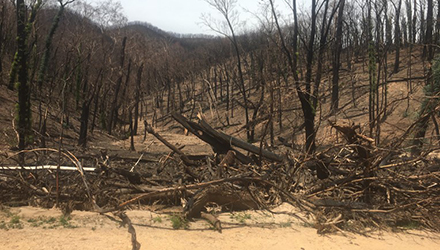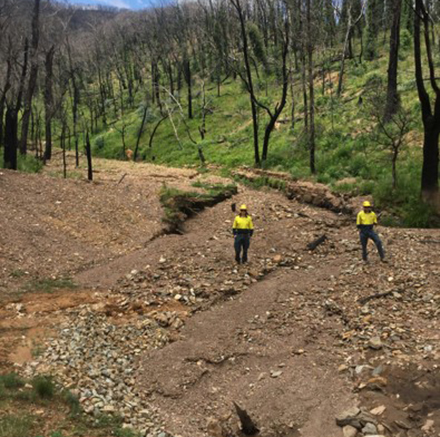Access to State forest on the western foreshore of Blowering dam will remain closed over the Christmas period, as there remains a high risk with dead trees continuing to fall and the roads being severely damaged as a result of the devastating Black Summer bushfires. Source: Timberbiz
The following roads will remain closed over summer: Yellowin Access Road, McDonalds Trail, Sturgess Trail, Foreshore Road (from Jounama Dam to Snubba Road) and Blowering Camp Road.
Rain and road damage have severely limited Forestry Corporation of NSW’s ability to undertake remediation around the Blowering Dam.
To date, Forestry Corporation has spent $1.3 million on repairing some of the devastation caused by the fire in the State forests next to Blowering Dam, with ongoing work set to continue well into 2021, said Forestry Corporation’s Snowy Region Manager, Dean Anderson.
“The scale of infrastructure damage is simply unprecedented; we have not been able to access some roads ourselves due to hazardous conditions,” he said.
“All up, there are over 170 kilometres of damaged roads needing repair just in the State forest next to Blowering Dam, this is longer than the road trip from Tumut to Gunning.
“It is also worth noting that in the 1960s when the then Forestry Commission of NSW was asked to establish pine plantations to help protect the Blowering catchment, there were over 60 dams built to reduce silt and soil entering the dam.
“During the Black Summer fires these dams have done the job they were designed to do and captured a lot of the silt coming off the now bare hills.”
Remediating this network of silt dams is one of Forestry Corporation’s main priorities and essential to reducing the amount of sediment making its way into the Blowering Dam.
Engineers and soil specialists have been engaged to assess what should be done with each individual dam. One dam has been emptied using a local contractor as a way of evaluating what options are available.
In the interim, Forestry Corporation has flown the site and sown annual pasture grasses to provide some initial groundcover until the dead trees can be removed and a new pine plantation re-established.








